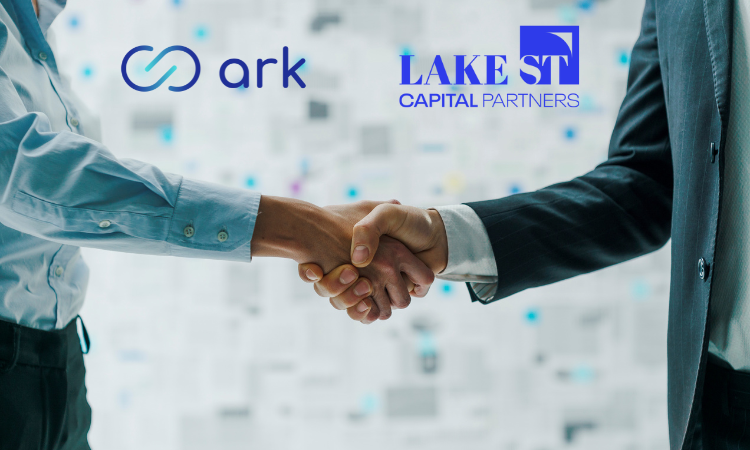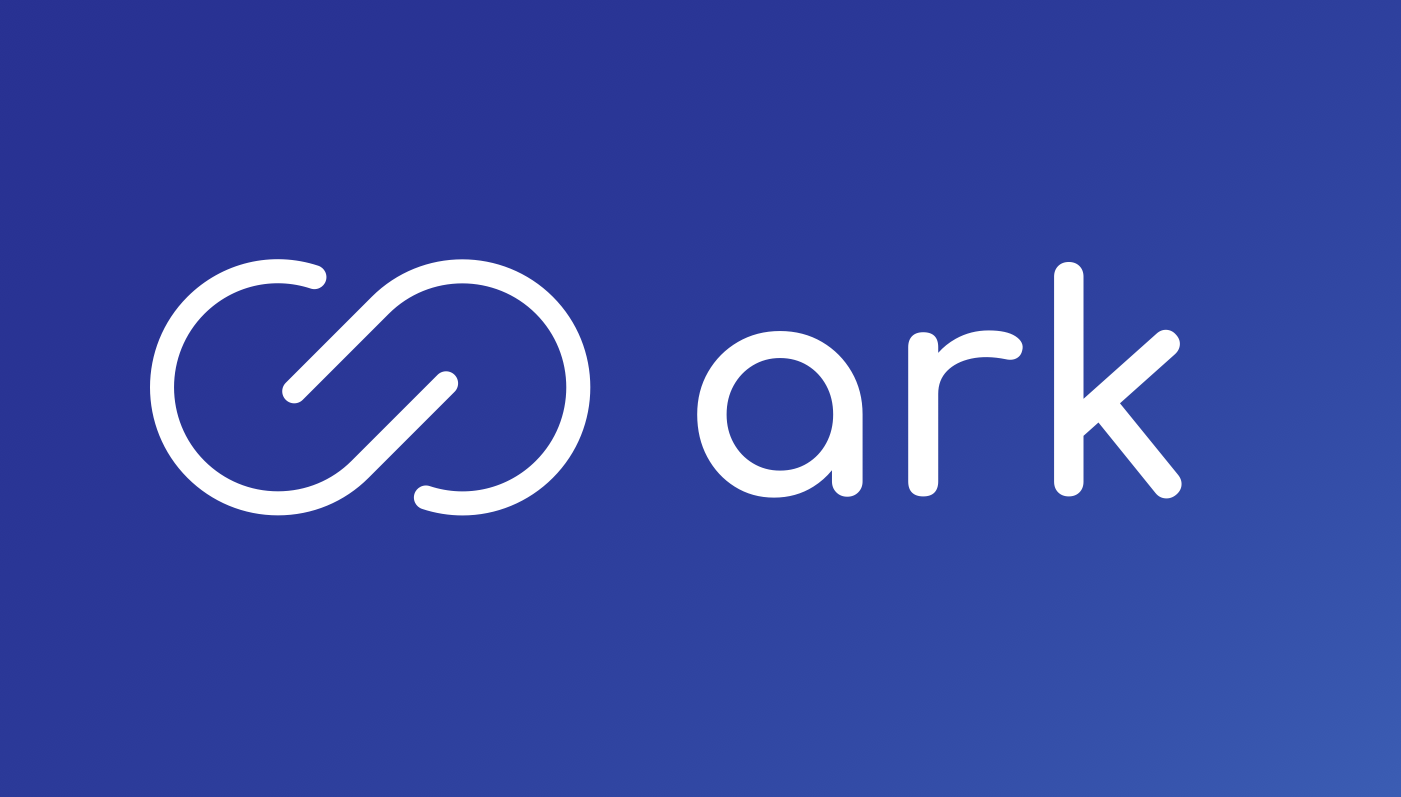Mike Trinkaus of 4Pines Fund Services, and Bryan Botha of Ark clear away the hype and nonsense around fund admin tech, and drill down on what the sweet spot for fund administration technology is, and what decisions industry leaders will be forced to make.
Chris Gale 00:01
Welcome, everybody, to the Fund Services Series. This is episode two and we have Mike Trinkhaus from 4Pines Fund Services and Bryan Botha from Ark, following up on episode one. First, let’s do intros: Mike, I think a lot of people on this call know who you are but refresh us.
Mike Trinkaus 00:26
Thanks, Chris. First of all, I’m excited to be here, and thanks for the opportunity to speak with you. And Bryan, we’re going to cover a bunch of topics today that we’re very passionate about at 4Pines. I’m the CEO and one of the founders of 4Pines. I had a long career in the private equity space prior to moving over into the fund admin world. I’ve built and sold one fund admin and I have spent a little bit of time in the larger admin market. I have a pretty good idea of what folks are doing on the small end of the market as well as the large end of the market.
Chris Gale 01:11
Excellent. I think a lot of folks on this call know Bryan, too, but please refresh us.
Bryan Botha 01:20
Chris, first, thank you for putting this webcast together. It’s great to be back with you again and I’m looking forward to this conversation with Mike as well. I started on the audit track at PwC about 20 years ago as a CPA in New York. For most of my career, I’ve been focused on private capital markets. And over the past 15 years, I’ve been at the intersection between technology and private equity. In that time, I’ve worked closely with many of the largest fund administrators advising them on how technology can be a vital tool, if done correctly, to achieve significant operational efficiencies. As we’ve seen over the past decade, particularly in terms of increased M&As happening in our space, scaling operations across different time zones and continents is almost unthinkable without a solid tech foundation. The good news is that there is a lot of great technology to choose from today, from investor portals to portfolio management to partnership accounting. The challenge is knowing what the right decision criteria are to give you that competitive advantage for more than just the short term. And one of the things in that criteria that we’re going to be talking about today is co-sourcing.
Chris Gale 02:44
We will get back to that because both of you have a history of pioneering co-sourcing. Mike, can I ask you to drill down a little bit further on your biography? I don’t think you’re in the business of giving advice to other leaders in fund administration but you did found 4Pines, I think, because you saw a gap in the market. Can you tell us more, broadly speaking, about what you think that fund administrators should be doing today, that maybe not enough are doing?
Mike Trinkaus 03:21
I would agree that I’m definitely not in the business of telling folks what to do or how to do it but I think there are definitely some overall themes that I can throw out there that will resonate with everyone in the industry, whether you’re on the large end, or a medium-sized firm or a smaller firm. We all have to remember that this is a conversation about technology, how we use technology and the great things that technology can do to enhance our jobs. But, first and foremost, we’re a service organization and we can’t ever lose sight of that. People matter. And how we leverage technology to enhance a career, to enhance our relationships is critical to how we do business.
Our greatest assets in this industry are the people that execute on the day-to-day, the month-to-month, the quarter-to-quarter, etc. The second thing I would say is that technology is a pathway to offering a more comprehensive service model. That’s critical for us because the way we see it, it all gets back to people. That comprehensive service model is allowed to flourish the way we want it to when you have the right technology pieces in place. So, in terms of some of the gaps that we saw, what motivated us to launch 4Pines, is that opportunity – to create and partner with folks on the technology side to help bring a different perspective of how to use technology in this space. As an industry, we do need to do a better job of partnering in integrating technology into our day-to-day workflow. Because as the market moves forward, we’re presented with more and more challenges every single day, whether it’s the timing of requests that we have to turn around, whether it’s the level of detail of requests that we need to get to in order to keep our clients happy. It is focused on this partnership, this collaborative approach between firms leveraging technology to accomplish a lot of those higher service aspirations that we have as a firm. The final thing is data, data. It’s our job as a service provider to provide our clients with their data as quickly and as efficiently as possible so that they can manage their business. The right technology and partners in that particular sleeve of what we do are critical for our success and the success of our clients.
Chris Gale 06:15
So, you’re saying that even though the headline is “A Sweet Spot for Technology,” you’d start with the people – and that there’s a sort of top speed at which they can do the work they’re being asked to do. The technology, then, is the sweet spot.
Mike Trinkaus 06:37
Yes, that’s exactly right. The technology is the enabler or the conduit of how we want to deliver our service model. If we use technology in a way that frees up our people, that puts them in a position to partner and collaborate with our clients, that is a winning strategy. We’re focused on different technologies that allow us to do that.
Chris Gale 07:02
That’s very user-centric. Bryan, you’ve written about co-sourcing, and, like we said earlier, you and Mike were there in the early days talking about and thinking about co-sourcing. Isn’t that supposed to solve some of these things that Mike was talking about? How would you define co-sourcing?
Bryan Botha 07:22
It’s important to define these terms because co-sourcing is a trend that’s definitely on the rise but is still emerging, and there are a lot of folks that don’t have a lot of familiarity with it. Co-sourcing, in broad terms, just allows fund managers to benefit from the valuable services offered by fund administrators without losing control of their data. And that shift enables fund administrators to manage their clients’ books and invest in reporting directly on the clients’ tech stacks. An extreme example: If you were to decide to leave your current fund administrator, would you continue to have access to the fund reporting, to the financial reporting tracking of the performance of your funds? And if you answer yes to that, then you likely have considered co-sourcing so that your data doesn’t end up in a system that you don’t control. If the answer is no, then you don’t want to be in that unenviable position and you may want to consider co-sourcing when you’re shopping for a fund administrator or when you’re shopping for your next technology vendor. It applies equally to technology vendors as well, some that support and some that don’t. But going back to what Mike said, back in those days, it was practically unheard of to find a fund administrator that didn’t force you onto their systems. You know, most PE funds back then did the fund accounting and investor reporting in-house with their back-office staff. But where a fund manager was already using their own system, Mike and his team would offer to maintain the books and records from the clients’ system, rather than giving them no other option. And what this did was give the client the option to easily switch providers should the service ever fall short. It also allowed them to keep control of their data. And so why does that matter?
Speaking with a large GP just recently who is using multiple fund administrators for their different funds, each administrator advised this GP to go with a different investor portal technology. The GP took that advice and ended up with three different portals across their funds. Not the best experience, especially for their most important LP investors who are invested across all their funds and now have to manage three different logins across those different portals. The firm ended up transitioning to a technology that supported co-sourcing, where they allow each of their fund administrators into the same technology that they manage. They can all do their respective piece but maintain one unified experience for their most important stakeholders, their investors. And I’ve seen a lot of other situations where, because the GP decided to go from using a fund administrator to doing it in-house, they were forced to abandon the industrial portal completely and start from scratch because it was licensed by their fund admin, not by the GP directly, and the technology just didn’t support that transition. At Ark, just as an example, if a GP decides to move from one fund admin to another fund admin or decides to go back to doing it in-house, it’s a simple flick of a switch, with no downstream impact on their investors and no need to start over. And I think that’s where things are moving.
Chris Gale 11:05
This sounds like a horrible idea: I’m going to let other fund service providers also serve the client and then my client could let go of me more easily?
Mike Trinkaus 11:30
Well, my view on this is different from a lot of folks in the industry. As we all know, we’re a collection of our lived experiences. And for me, my formative years were really in the PE space. From my perspective, we always try to look at it from that CFO chair: What would the CFO think of this idea? How would they evaluate it? What’s the risk profile that they’re looking at? For me, it was always a simple answer: co-sourcing is the answer for most GPs for a variety of reasons. Bryan hit on a number of them. And it’s a great point that you brought up, Chris. But the reality is, if we as fund administrators do our job the way we’re supposed to, it’s a non-issue altogether. It aligns our interests with our clients to perform, to deliver like we’re supposed to. And because we’re rowing in the same direction, it does create a different relationship. It goes back to partnership. It goes back to collaboration. Those are key components in having a healthy relationship with your clients. It reduces risk. All CFOs and all CEOs go into their day-to-day job looking at risk. “Okay, what is my risk profile today? Where do I have risk? Where can I reduce risk?” When you go back seven or eight or nine years ago, when we first really started doing this, there was a lot more uncertainty then. If you can go into a system and you take a big risk factor off the table for a self-admin who wants to explore the fund admin market by saying, ‘You know what, you’ve got your data, it’s your data.” It takes a lot of that big unknown, that big risk, off the table. And that was a big motivator for us early on. We’ve just continued, over the years, to add reasons why this makes sense.
Chris Gale 14:06
Is that why you started with talent? You want to allow the team that you have to shine without being clouded by bureaucracy and technology to get things set up quickly?
Mike Trinkaus 14:22
Well, I think it’s why you can focus on people. Because you’re taking some of those really hard conversations off the table. This allows you to focus on what we think the industry should be focusing on again, which is the people. We can’t do it without the technology. But when you have the right technology in place, the right strategy in place around how to use technology, it allows your people to shine through, and that’s a primary goal of every engagement that we have.
Chris Gale 14:52
If I implement technology today, it takes a while. And we’re not so big that we need an implementation consultant but still, this is complex work. How incentivized are technology companies to bring down these barriers to allow our talent to shine? If I need to hire all this implementation help and professional services, it shows up as another revenue stream, a revenue stream that’s contrary to my interests.
Bryan Botha 15:46
That’s a valid point.A lot of technology firms, going back in time, used to also be professional services firms. And when you’ve got a revenue stream, when you’ve got a profit center of implementation consultants – everything comes down to incentives. Like you said, how are you going to find ways to get the implementation done faster and enable your clients with a turnkey solution when you’re making money from that? It’s going to be challenging. A lot of firms have moved over to a free support model, which I think makes absolute sense. But getting to a point where you’re offering free implementation forces the technology vendor to think about how to make that fast and quick and enable your clients the same day, or at least within a few weeks, not within months or years, like some implementations. That point goes right back to Mike’s earlier point about putting service professionals and the team first. If you’re a fund administrator or a GP and your team has to then take on the task of going through an implementation on top of all the things that they’re already doing, that’s a lot to ask in the current environment where we’re having a war over talent. And it’s great that we definitely want to use the best technology that’s out there. But there is movement with all the technology that’s available to figure out how to get that client enabled more quickly, design flexibility into the solution, and make the user experience as well-matched to understanding what they go through every day. So, it has got to be built by folks that understand the industry and have been in the industry.
Mike Trinkaus 18:19
I want to underscore those points that Bryan made. They are in the software business, I’m in the fund administration business that’s focused on technology. And from our perspective, what he said is critical. Because when you look at the technology landscape that’s out there, there isn’t a firm that does everything, no matter what the marketing materials tell you. There are lots of good players in this space doing very specific things. But nobody does everything. As a fund administrator, we need a full technology stack with partners that allow us to be agnostic to the different technologies that are out there – from the standpoint of, “We need a solution for this, we need a solution for that,” to the extent that each one of these solutions can plug and play very quickly, very efficiently into what we’re doing. It’s critical for us from the standpoint of managing our technology stack and our business. It’s really important that we don’t have long implementations, that we can take control over what we’re doing. One of the biggest challenges in the space as fund administrators is we can’t influence the technology fixes or the direction they are going. So, it’s a really important point to think about it from a fund administrator’s perspective and how we manage our business.
Bryan Botha 20:21
Another key component is the incentives. A lot of software firms out there create a great widget, but we don’t work in a cookie-cutter industry. Every GP is a little bit different. And these are the private markets, there’s not one way to report on something or do something. So, when you’re asking for the ability to do certain things – like, “Can we add this key performance indicator or this metric into what this LP wants to see? Can we reformat the way that the information shows up in their quarterly reports?” But the incentives are for the technology vendor to say, “Well, that’s something outside of our widget, we’re going to have to do something custom for you and that’s going to take six months and additional fees.” What I love about Ark and a lot of the technologies that are starting to emerge is that flexibility is built into the product. So not only do you never have to run into that custom situation, but it’s kind of woven into the fabric of the solution itself. And you also can do it yourself. So even spinning up a new instance for one of your clients, you get to set the timing. You get to decide how quickly you want to spin that up. And you don’t have to depend on the vendor to get involved in that process.
Mike Trinkaus 22:13
Yeah, that’s always a challenging point, too, because working with clients, deadlines change, and they get moved up. So having that flexibility to spin something up quickly is important in our relationships with our clients.
Chris Gale 22:40
We have a Q&A feature. If anyone has questions, we invite you to put those in. We’re almost at the end and I did want to come back to the headline. What should folks in the fund administration business be asking of technology vendors to achieve what you’ve been describing? How do you get that? What are the questions you should be asking?
Bryan Botha 23:33
We’re facing these economic headwinds at the moment and so fees are always top of mind. There are lots of different fee models out there and some of them can get quite complex. For example, you have got the number of users, you have got the number of entities, or the amount of data. It’s important to keep fees simple for clients and predictable so that folks can budget things. And it’s not like, “Oh, wait, the implementation was twice as long and hard as we thought it would be,” or “Oh, there’s all these things that are not out of the box.” Moving towards a free implementation, there are never any fees for support, and it doesn’t matter how many users or how many entities one has. It’s a model that’s predictable and budget friendly. In the current economic environment, it is a win for us. But there is also looking at things like how long it takes to typically implement the product; whether it plugs and plays with the tech stack you’re already using; whether the technology that you’re thinking about moving forward with meets you as you are, rather than forces you to unplug five things that are working pretty well for you. If you’ve got one thing that works well, stick with it and plug into the parts that are really going to give you that edge, that competitive advantage, without quitting those that work.
Chris Gale 25:18
Great. Mike, did you want to add anything? Otherwise, I’ve got a question.
Mike Trinkaus 25:23
I completely agree with Bryan. That’s often a huge part of the criteria that we’re looking at when we look at new technology.
Chris Gale 25:35
Along the lines of economic headwinds, we have a question from the audience. How have you handled staffing concerns? Are you dedicated to a particular strategy, onshore, offshore, or delivery model?
Mike Trinkaus 25:56
Yeah, we were all onshore, we don’t do anything offshore. From the headwinds of staffing, we haven’t run into them just yet. We’ve been able to secure staff when we have a conversation with folks, whether they’re inexperienced, middle-of-the-road experience, or senior folks, we explain to them what we’re doing and how we’re doing things, and where we want to get to. It’s a pretty attractive option for folks. We’re trying to be a bit creative, like a lot of folks are today, in where you’re requiring people. While everybody is here in the U.S., we are not an all-in-one location. We have got folks in a few different states. So, we are building in that remote-work structure that we’ve seen develop over the last couple of years. And we’ll continue to look at that and utilize that to attract talent. That creates other challenges. But we’re very mindful of that. We’re smaller so it’s easier for us to manage. The bigger folks clearly have a different challenge than we do. But for us right now, we’re in a good spot. We feel very fortunate.
Chris Gale 27:27
Bryan, can you speak from experience on the bigger folks out there that might have members of their team on different continents? Or maybe you’re looking at offshoring as a way of solving a problem that technology could solve as well?
Bryan Botha 27:42
Offshoring has been a big part of the equation as there’s been a lot of M&A movement in our industry over the last 10 years, and that’s been accelerating. You’ve got a lot of large global players that are just all over the place. And they’ve done that through acquisition or through scaling their operations in multiple cities around the world. Taking advantage of the differing costs of doing business and costs of labor in different areas where there’s a lot of expertise makes a ton of sense. Of course, it has its downsides as well. You’ve got to make sure that you’re managing all of that and sometimes technology can help. It comes down to that relationship and the service that you’re able to offer and a lot of that is the human touch. Technology can help facilitate that and make things more efficient but it doesn’t take away from the goal of just making sure you’re delivering on the service in a way that folks can feel and understand.
Chris Gale 28:54 Thank you, everybody, for joining us. Thank you, Mike and Bryan, very much.




